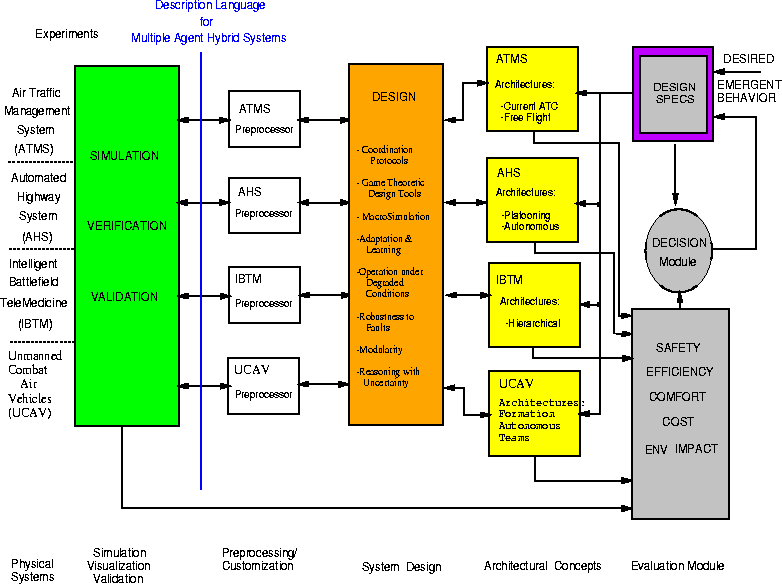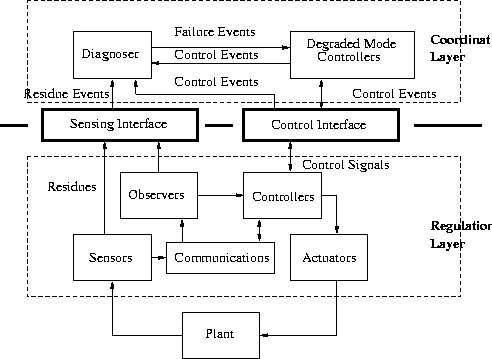
Figure 2: Multi-Agent Hybrid System Design Environment
There is a continuum of design choices for system decomposition, ranging from strict hierarchical control to a fully distributed, multi-agent system. Furthermore, different choices may be appropriate at different levels of abstraction, ranging from the (typically continuous-domain) low-level control systems concerned with safety and smooth execution to the (typically symbolic/discrete) strategic levels concerned with optimization and planning for high-level goals. We will investigate theoretical and design issues involved in the choice of system architecture, and methods for interfacing elements of the resulting hybrid system. We will study the choice of hierarchies and heterarchies required for the UCAV or aero engine test bed. We will investigate the extent to which we can organize the control of complex systems to achieve emergent optimal behavior of the collective system for the usage of a scarce resource by many agents operating with varying degrees of autonomy. A similar study will also be conducted for the jet engine test bed.
We envision a design, simulation, and verification environment for multi-agent hierarchical hybrid control systems as shown in Figure 2.

Figure 2: Multi-Agent Hybrid System Design Environment
The specifications are described by the desired emergent behavior of the collection of agents. These requirements are usually described linguistically, such as increased safety and throughput, reduced emissions on the AHS, or increased frequency of landings and takeoffs and optimum utilization of air space for Air Traffic Management Systems. These requirements should get ``compiled'' into a system architecture.
The controller of each agent is described by a multi-layer hierarchy. The higher layers are typically modeled by discrete-event systems, which plan and reason under uncertainty, and take strategic decisions in coordination with other agents. The lower layers, on the other hand, typically involve continuous dynamics and performing path planning and regulation tasks. Figure 3 illustrates such a hierarchical organization of diagnostics and control layers required for fault management of automated vehicles.

Figure 3: Fault Management Architecture
The lower layer here is comprised of the sensors and observers that process the continuous dynamics. The sensing interface, designed by soft computing techniques, reasons with the uncertainty in sensor and observer information. It is responsible for mapping sensor and observer outputs to a decision on whether the output is high or low. This crisp decision is processed by the diagnoser which is a formal entity that has a deterministic output for every sequence of inputs.
The control laws at different layers along with the inter-agent coordination schemes are to be designed, in order to satisfy the specified requirements such as safety, productivity, efficient resource utilization, etc. Tools used for design may be conventional discrete / continuous / hybrid tools. Once the control laws for individual agents are designed, the various layers can be formalized as collections of hybrid modules. This will allow micro-simulation of individual agents and macro-simulation of the collective emergent behavior, and support attempts at both micro- and macro-verification of crucial system characteristics.